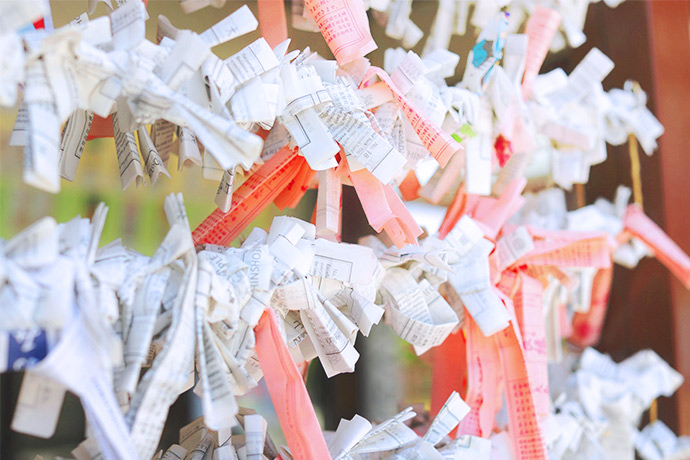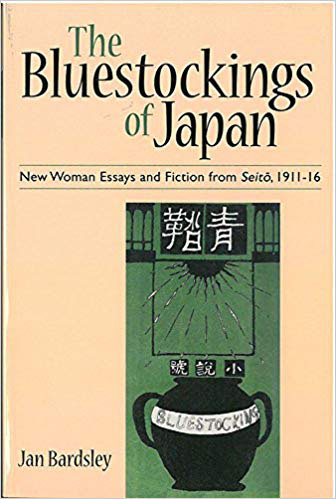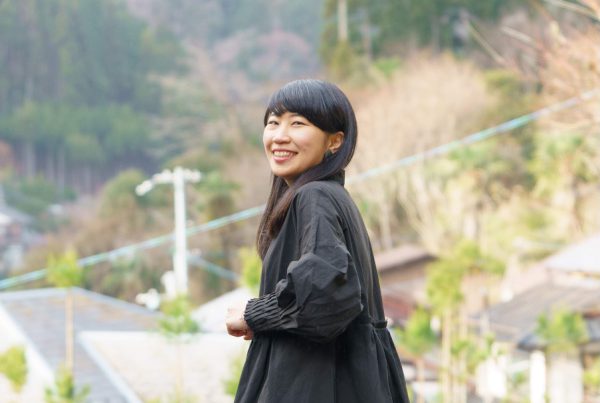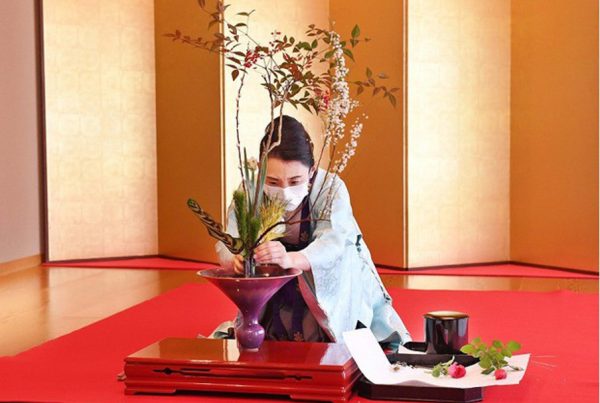For most Japanese, one of the pleasures of visiting a shrine is to draw a fortune and ask the true intention of God at the shrine that they visited. Locally known as omikuji, these random fortunes, written on strips of paper, are typically seen in most Shinto shrines and Buddhist temples in Japan. Today, it remains as one of the most popular traditional activities when visiting a shrine.
But did you know that the spread of omikuji was related to the women’s empowerment movement in Japan? To know more about the history, The Nagaoka Review reached out to Yasutaka Yumoto, a researcher and history enthusiast from Nagaoka City, Niigata Prefecture, Japan.
Yasutaka Yumoto of Nagaoka City, Niigata, Japan.
What is an omikuji?
According to Yasutaka, “omikuji is a sacred fortune telling paper with written oracles. They are like sacred lots drawn at temples or shrines. In the event of the fortune being good, you have two options: whether tie it to the tree or wires so that the fortune has a greater effect, or you can keep it for luck.”
“Since ancient times, omikuji has been used to listen to God’s will in order to make important things and decide on successors. It seems that it was thought that God would be able to make fair judgments by drawing fortunes.”
Omikuji tied up to reversea less desirable fortune into a good fortune. Image Source: Japan Magazine
“The Chronicles of Japan (Nihon syoki) also states that Prince Arima (son of Emperor Kotoku or the 36th emperor of Japan who ruled from 645 – 654) used a lottery to determine the success or failure of the rebellion, which is considered to be the oldest lottery record in Japan.”
“It is said that the omikuji was designed by the 18th Tendai lord and the former three great masters of the Heian period (ran from 794 to 1185 and was one of the early years when the capital of Japan was moved to Kyoto). Omikuji was also based on the fortune-telling called Tenjikureisen in China. So, we can say that the omikuji carries lots of history and gives us a glimpse of the culture and tradition of the early days of Japan.”
Omikuji and the Women’s Road
“Until the middle of the Meiji era, some of the big shrines made their own omikuji, but now, only around six shrines nationwide make these. The largest of these is Nishoyamada Shrine in Kano, Shunan City, Yamaguchi Prefecture. It has a share of about 70% of Omikuji manufactured nationwide and is actually a women’s rights group.”
“The person behind it was Shigetane Miyamoto, the 21st priest of Nishoyamada Shrine. Since Shinto is no different from other religions in its treatment of women, he recommended the appointment of a female priest and quickly appealed for women’s suffrage.”
“In 1905, the Dainippon Keijin Women’s Association (大日本敬神婦人会) was established with the aim of improving the status of women. The following year, he founded ‘Women’s Road’ and published the magazine ‘Women’s Road’. Omikuji is now used to fund its activities.”
“The organization is said to have been formed earlier than the ‘Bluestocking Company,’ a magazine launched in 1911 until 1916 and credited to have started the Japanese feminist movement and calls for women’s suffrage.”
Bluestocking Magazine. Image Source: Japan Times
“Shigetane also developed an automatic distribution machine for omikuji, which is also Japan’s first vending machine, and tried to spread it nationwide. In addition, the 22nd generation Kiyotsugu Miyamoto, Shigetane’s son, further improved this. When you insert coins, the lantern lights up, music plays, and it is sold as a new model with a fortune slip.”
For the those people who practice omikuji but may not be aware of this interesting facet and history, we hope that you will have an enriched experience the next time you visit a shrine and draw an omikuji.














